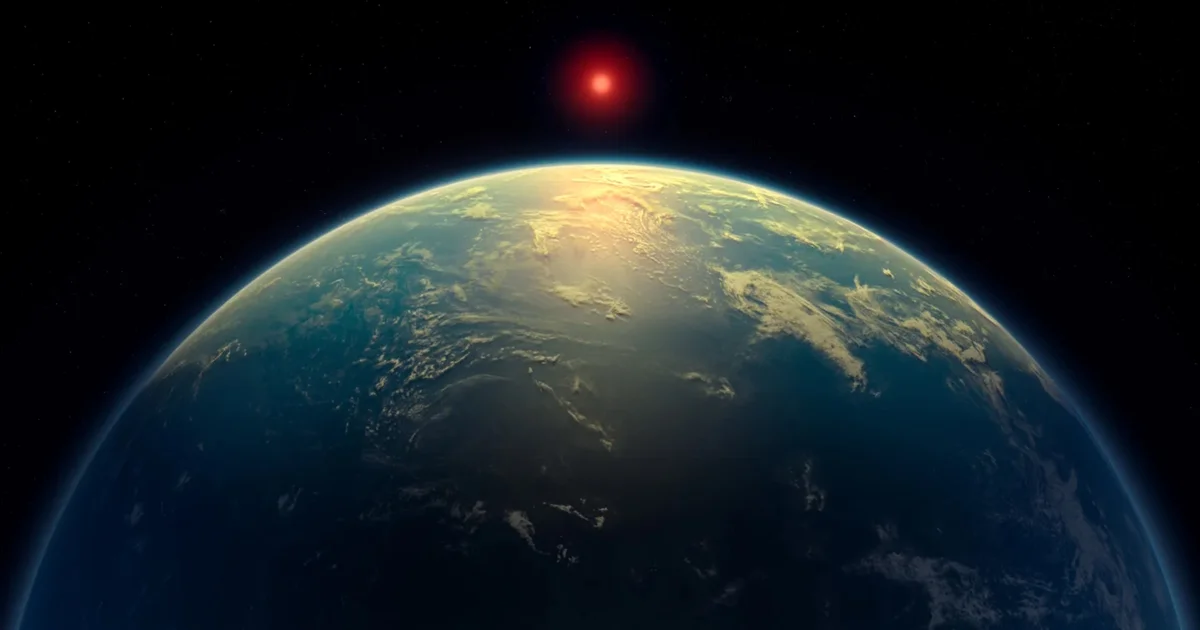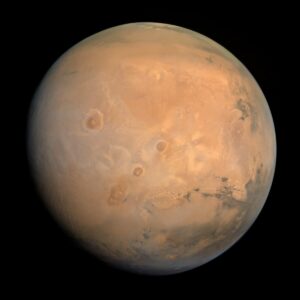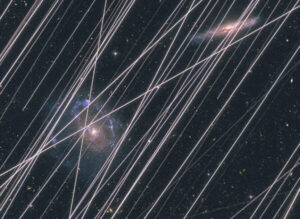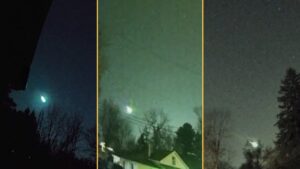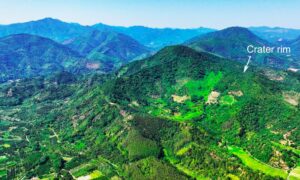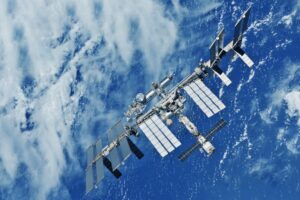The year is 2021. On Earth, COVID-19 rages. NASA is finally about to launch the James Webb Space Telescope (JWST), prophesied to usher in a new era of astrophysics. And a Cambridge professor named Nikku Madhusudhan writes the unobtrusive first entry in his to-be trilogy of papers on nearby exoplanet K2-18b.
Madhusudhan and his two collaborators propose a new category of planet, which they dub a “Hycean” world. Much larger than Earth but smaller than Neptune, Hycean worlds would boast water oceans under a hydrogen-rich atmosphere. In terms of habitability, they would be more flexible than rocky worlds like Earth. Their atmospheres would keep their temperatures stable. They might even have plentiful aquatic life.
Flash forward to 2025, and astronomers have yet to confirm the existence of Hycean planets. But last week, Madhusudhan’s team at Cambridge claimed the discovery of potential biosignatures on K2-18b, one of their candidate Hycean worlds. The biosignature in question is the molecule dimethyl sulfide, largely produced on Earth by phytoplankton.
Headlines around the world have run rampant with this sign that we might not be alone. However, what many outlets leave out is the history of the claims in question and the concerns raised by a host of astronomers, many of whom are deeply enthusiastic about the search for extraterrestrial life. The first “hints” of possible life, reported by the Cambridge team in 2023, met with widespread derision among the astronomical community. The same is true for this new evidence in 2025.
That’s not to say that the new results are obviously false, or even that aliens are definitively not involved. But the story of dimethyl sulfide on K2-18b isn’t a simple one.
JWST is the best in the game, but the game is a hard one
Sitting at 1.5 million kilometers from Earth, JWST is the premier instrument in the solar system for observing exoplanetary atmospheres.
Under irradiation from their host star, atoms and molecules tense up, absorbing light at specific wavelengths. When they relax again, they emit that light. Observing patterns of missing or surplus light allows astronomers to identify the chemistry of the universe.
Much of the field of astrochemistry focuses on either the diffuse gas in interstellar space or the dusty rings around protostars. While not simple, these systems don’t hold a candle to the complexity of exoplanet atmospheres. Planets have so much gas, such turbulent atmospheres, and are so irradiated by their host star that their light signatures are a blurry mess. Different atoms and molecules all jockey with one another for space. If astrochemists typically deal with barcodes, exoplanet atmospheres are like identifiers from the 17th century, stored in a damp warehouse, half-eaten by moths.
Oh, and if you want to take a photo of it, you have to do it while it’s on the hood of a car with its brights on. The light from stars overwhelms anything from the planet. Astronomers use JWST to analyze the light coming from the star while the planet is in front of it, and compare that to the light coming from the star while the planet is behind it. This technique, called transit spectroscopy, separates the light from the star and the light from the planet. It’s also very, very difficult.
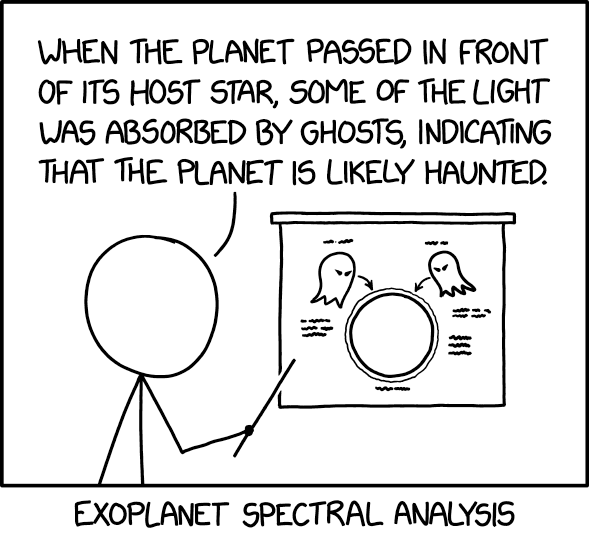
While much discussion in astrobiology has focused on signatures of life, signatures of the undead have been sadly neglected. Photo: XKCD
‘Possible’ biological activity
In October of 2023, Nikku Madhusudhan and his team published the results of their JWST observations of K2-18b. Their paper, entitled Carbon-bearing Molecules in a Possible Hycean Atmosphere, drew less attention for its carbon-bearing molecules and more for its discussion of dimethyl sulfide.
Unlike many other kinds of spectra, astronomers can only parse exoplanet spectra using complex models. These models run through different options — more methane, less methane, more ammonia, less ammonia but at a higher temperature, etc. — to find the best fit. But the models require educated guesses on what molecules might be in the atmosphere. The chosen molecules can greatly affect the model’s conclusions.
So when the Cambridge team ran their models on their JWST spectra of K2-18b, they limited the options to typical molecules found in exoplanet atmospheres: water, methane, carbon dioxide, and so on. And then, building off their 2021 work on Hycean worlds, they added five molecules they identified as biosignatures. These included dimethyl sulfide.
The best-fit model incorporated dimethyl sulfide at low confidence. According to their model, there was a 66% chance they had detected dimethyl sulfide, and a 33% chance it was random noise. Further muddying the issue was the fact that the JWST instrument used has a gap in the region where dimethyl sulfide is strongest.
The authors theorized that the dimethyl sulfide might originate from an ocean filled with algae-like life, despite the lack of other chemical byproducts associated with phytoplankton. They admitted, however, that future observations were required.
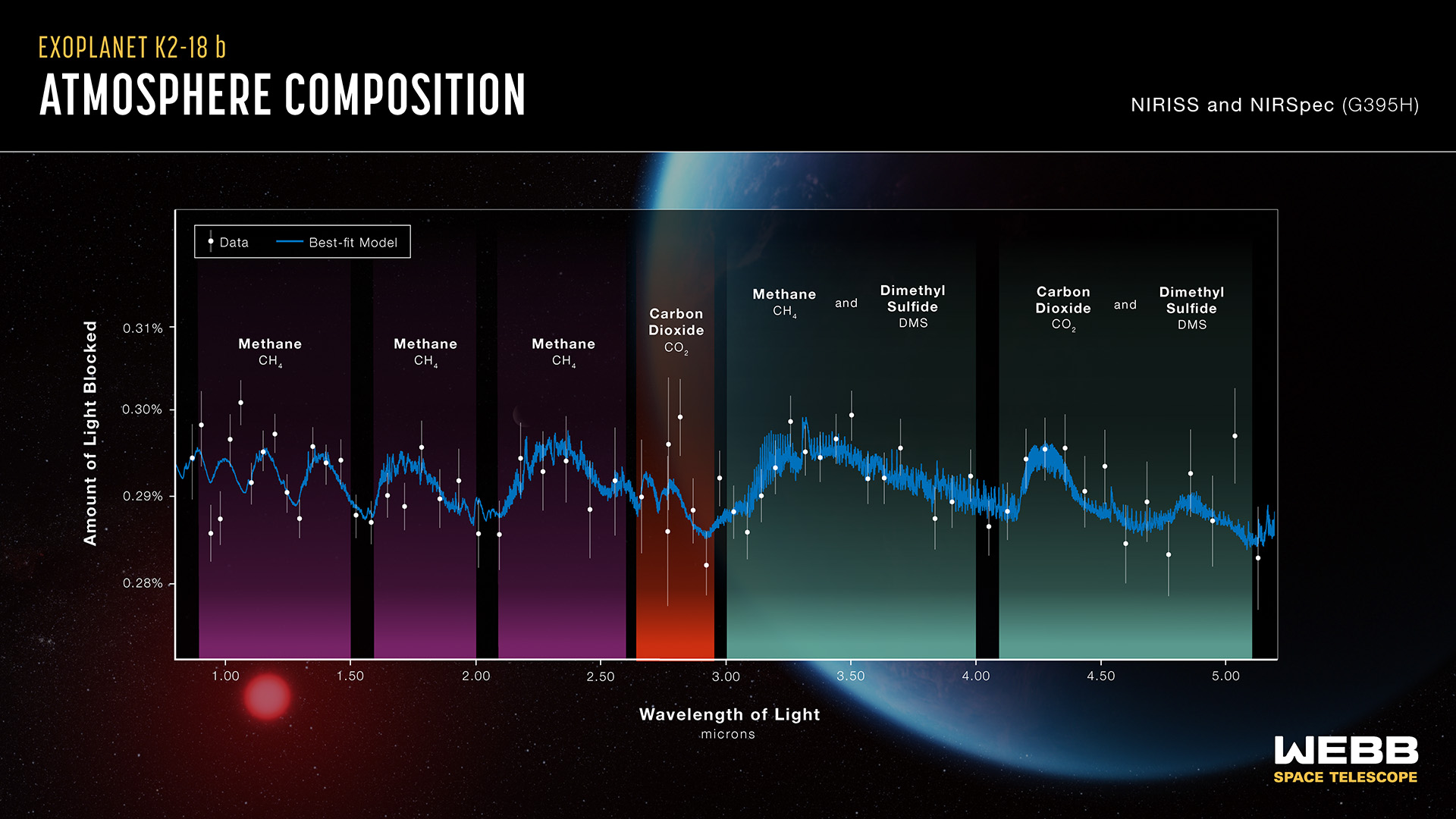
The blue line here is the best-fit model, while the white dots show the observational data. Photo: NASA, CSA, ESA, R. Crawford (STScI), J. Olmsted (STScI)
Follow-up observations on dimethyl sulfide
“This is a revolutionary moment,” Nikku Madhusudhan told The New York Times in an article published last Thursday. His new results were soon to be published in The Astrophysical Journal Letters. A deluge of comments on the NYT piece asked to read the actual paper, to no avail until the following day, when the press embargo lifted before the actual paper came out. “It’s the first time humanity has seen potential biosignatures on a habitable planet,” the author enthused.
The Cambridge team’s new paper reports on follow-up observations using a different instrument on JWST, this time without a gap in the region of interest. Their models came back with higher confidence this time. They also returned a hit for dimethyl disulfide, a relative of dimethyl sulfide and another potential biosignature.
Many astronomers noted the results were tentative, including Madhusudhan himself. “It is in no one’s interest to claim prematurely that we have detected life,” he told The New York Times. But that didn’t temper his enthusiasm. “Given everything we know about this planet, a Hycean world with an ocean that is teeming with life is the scenario that best fits the data we have.”
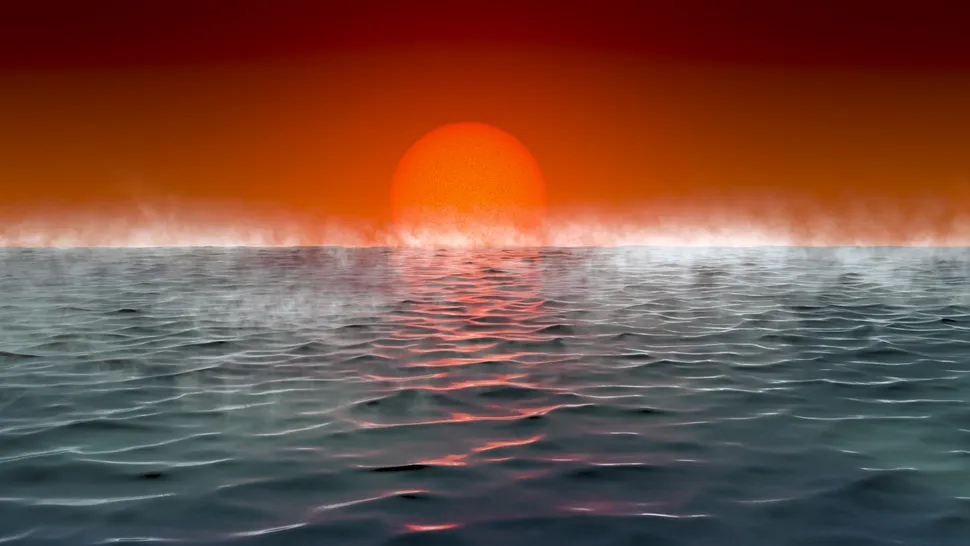
An artist’s illustration of a Hycean world. Photo: Amanda Smith/Nikku Madhusudhan
The pushback
Not everyone is as thrilled as Madusudhan.
ExplorersWeb spoke with Anthony Remijan, an astrochemist and interim director of Green Bank Observatory.
“There are probably dozens of molecules that can fit the extremely low resolution, low sensitivity of the ‘features’ seen in the JWST spectrum,” said Remijan. “To claim they can be attributed to a singular, unique molecule such as DMS [dimethyl sulfide] is an extraordinary claim. As such, it should be reinforced by extraordinary data, which is not what we have here.”
In fact, the new paper doesn’t address a recent reanalysis of the 2023 data by a separate team that didn’t find any evidence of DMS or even that K2-18b actually has an ocean. Some work has suggested K2-18b might be covered in magma rather than water, and therefore not a prime candidate for phytoplankton. Perhaps most crushingly, several recent papers show that dimethyl sulfide doesn’t even need life to exist. It’s also found on comets, which are not notable hotbeds of algae.
Remijan is particularly concerned about the validity of dimethyl sulfide as a biomarker.
“Over the past decade, interstellar urea was confirmed in the [interstellar medium] where at one point, urea was thought only to be formed by biological processes,” he pointed out. Urea is the main component of urine. “Obviously, this is not the case in the [interstellar medium].”
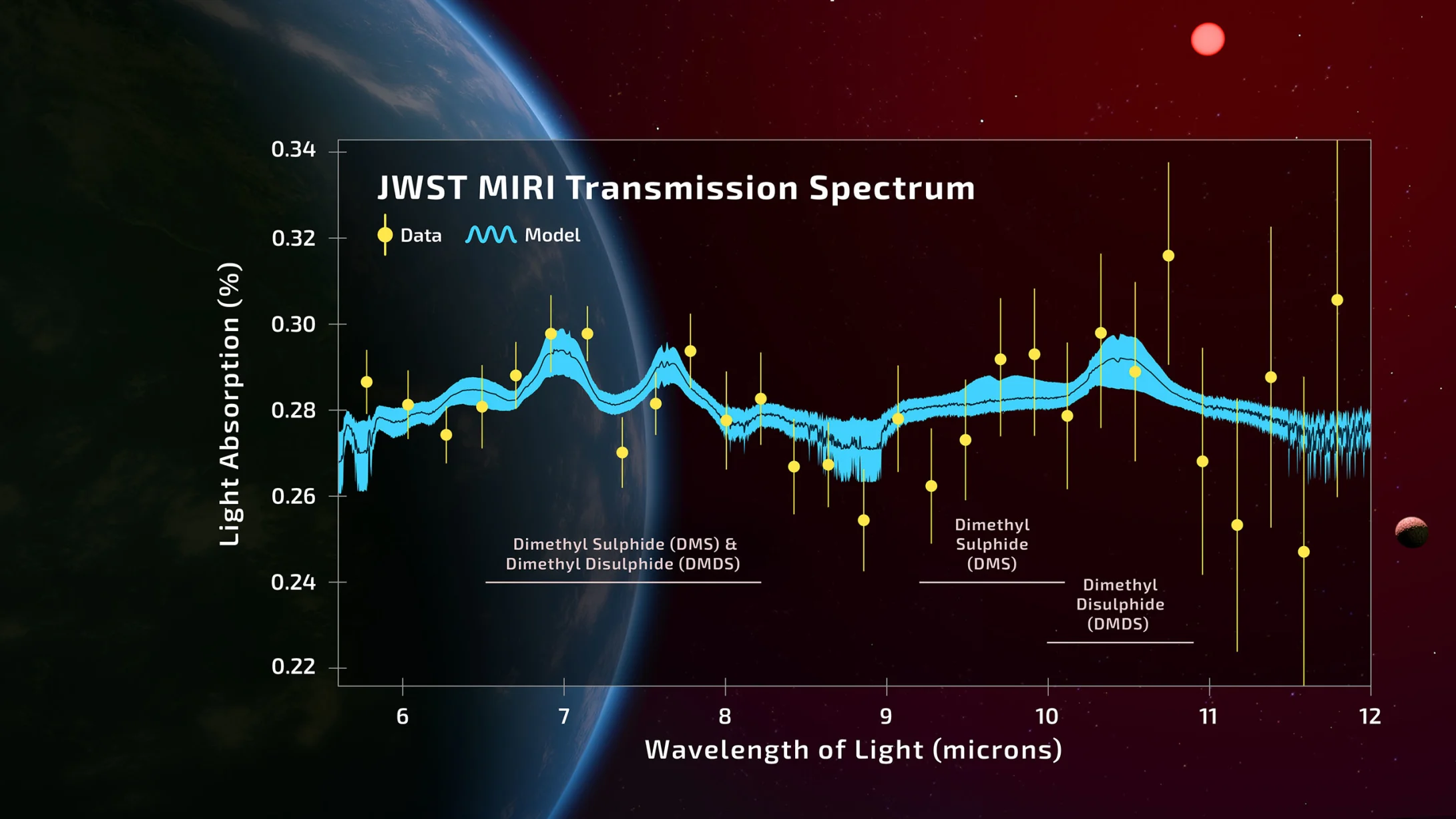
The light spectrum of the 2025 data. Photo: NASA/ESA/CSA
‘Practitioner vs commentator’
The Cambridge team acknowledges the uncertainties, but stand by their conclusions. When an interviewer brought up the biosignature issue on BBC Radio 4, Madhusudhan said, “This is the difference between a practitioner and a commentator. From a practitioner’s point of view, this is as good as it gets in science, and you just have to recognize it. But for that, you have to be in the field, not outside.”
As it happened, the interviewer questioning him was Chris Lintott, a published exoplanet astronomer.
In the press, too, some skeptical voices have tempered the hope for aliens. A scathing article in The Atlantic noted that “the word possible is doing load-bearing — if not Atlas-like work — in these headlines.”
Scientific American, meanwhile, interviewed Chris Lintott before his conversation with Madhusudhan on BBC Radio 4. “Dimethyl sulfide should exist in a chemical network,” he told them. “If it’s produced by biology, it should break down, and the raw materials such as H2S [hydrogen sulfide] used to make it should be visible in the spectrum, too. They aren’t.”
A blind search for life
The day after the Cambridge team’s press release, Nikku Madhusudhan’s former graduate advisor, MIT astrophysicist Sara Seager, published a paper of her own. Along with her collaborators, she analyzed the sensitivity and precision of JWST’s instruments in relation to exoplanet atmospheres. What she found wasn’t hopeful.
In a world racked by insecurity, political strife, and environmental degradation, it’s no surprise that so many of us want to believe in life on another planet. But according to Seager, we’ll have to wait.
She writes, “With JWST, we may never be able to definitively claim the discovery of a biosignature gas in an exoplanet atmosphere.”
And Anthony Remijan adds:
“To invoke a biological origin suggests there is no abiologic way to form these molecules, which is simply not the case. We are just beginning to scratch the surface on how molecules can form in these extreme environments, where [it was] once believed that no molecule should ever exist in space, except for hydrogen. So even if DMS was found in space, there is likely an abiogenic process we haven’t thought of yet that formed it.”
